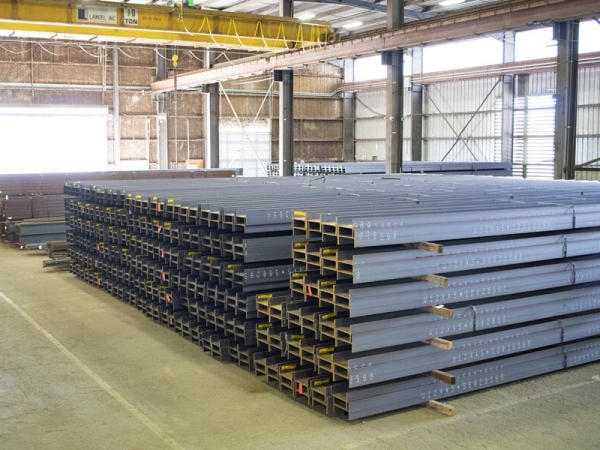Steel beams can be classified based on various criteria, including their shape, size, usage, and material composition. Here are some common classifications of steel beams.

1. Based on Shape:
I-Beams (or W-Beams): These beams have an "I" or "H" shape when viewed in cross-section. They are commonly used in construction for their high strength-to-weight ratio.
H-Beams: Similar to I-beams but with thicker flanges and a wider web.
C-Beams (or American Standard Beams): These beams have a C-shaped cross-section.
T-Beams: T-beams have a T-shaped cross-section, with a horizontal top flange and a vertical web.
L-Beams (or Angle Beams): L-shaped beams are used as support or bracing elements and have a 90-degree angle.
U-Beams (or Channel Beams): U-shaped beams are often used for structural support, like framing or bracing.
2. Based on Usage:
Wide Flange Beams: These beams are suitable for a wide range of applications due to their versatility and strength.
Hollow Structural Section (HSS) Beams: HSS beams have a hollow cross-section and are often used in architectural and structural applications.
Railroad Beams: Specially designed beams for railroad tracks and bridges.
Column Beams: These beams are designed to support vertical loads and are often used in building columns.
3. Based on Material Grade:
Carbon Steel Beams: The most common type of steel beams, often used in construction.
Alloy Steel Beams: These beams contain various alloying elements to improve specific properties such as strength or corrosion resistance.
Stainless Steel Beams: Resistant to corrosion and staining, stainless steel beams are used in applications where appearance and durability are important.
4. Based on Size and Dimensions:
Beams can be classified based on their size, typically determined by their depth, width of flanges, and thickness of the web.
5. Based on Manufacturing Process:
Rolled Steel Beams: These beams are manufactured by rolling and shaping heated steel.
Welded Steel Beams: Fabricated by welding together steel plates or sections, often used for custom or specialized applications.
6. Based on Load-Bearing Capacity:
Some beams may be classified by their load-bearing capacity, such as light beams, medium beams, and heavy-duty beams.
7. Based on Design Standards:
Beams can be classified according to design standards like ASTM (American Society for Testing and Materials) or EN (European Norms).
8. Specialized Beams:
Some beams are designed for specific purposes, like seismic-resistant beams or beams for offshore structures.
The classification of steel beams can vary by region and industry standards. When selecting a steel beam for a specific application, it's essential to consider factors such as the required strength, span, load-bearing capacity, and environmental conditions to choose the appropriate type of beam.